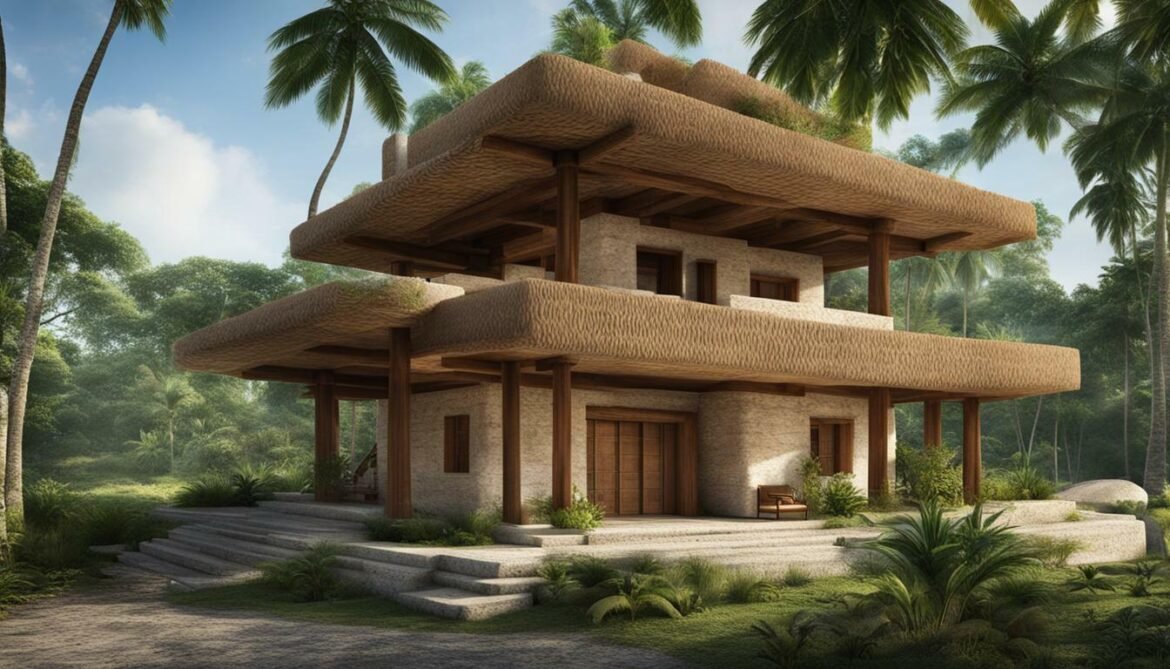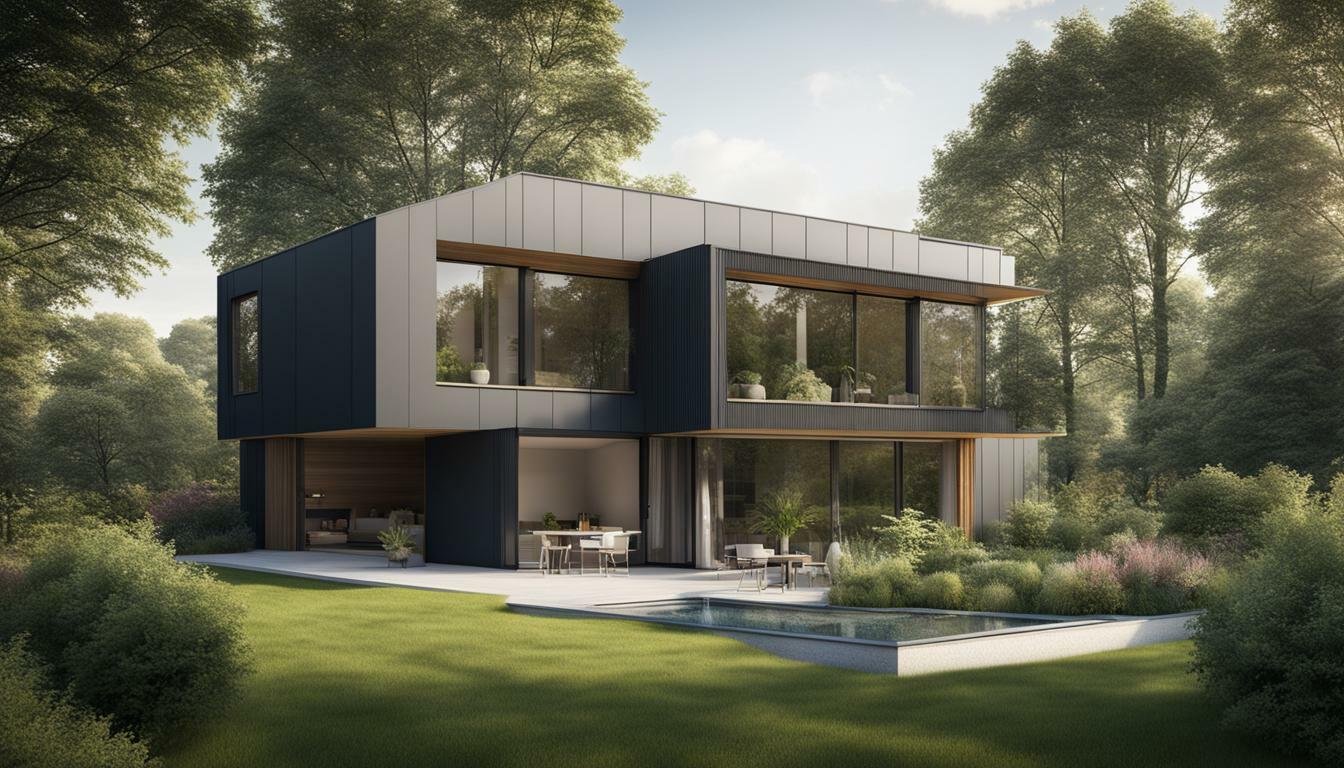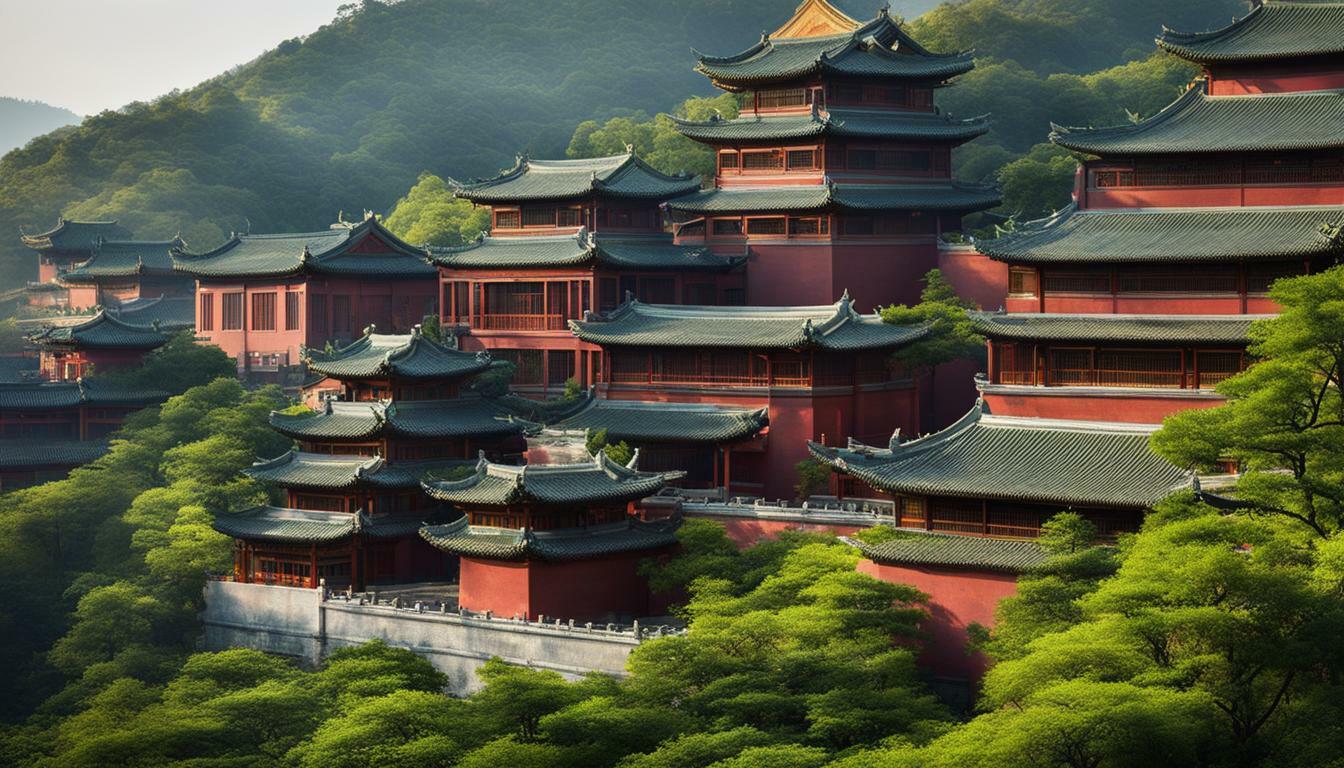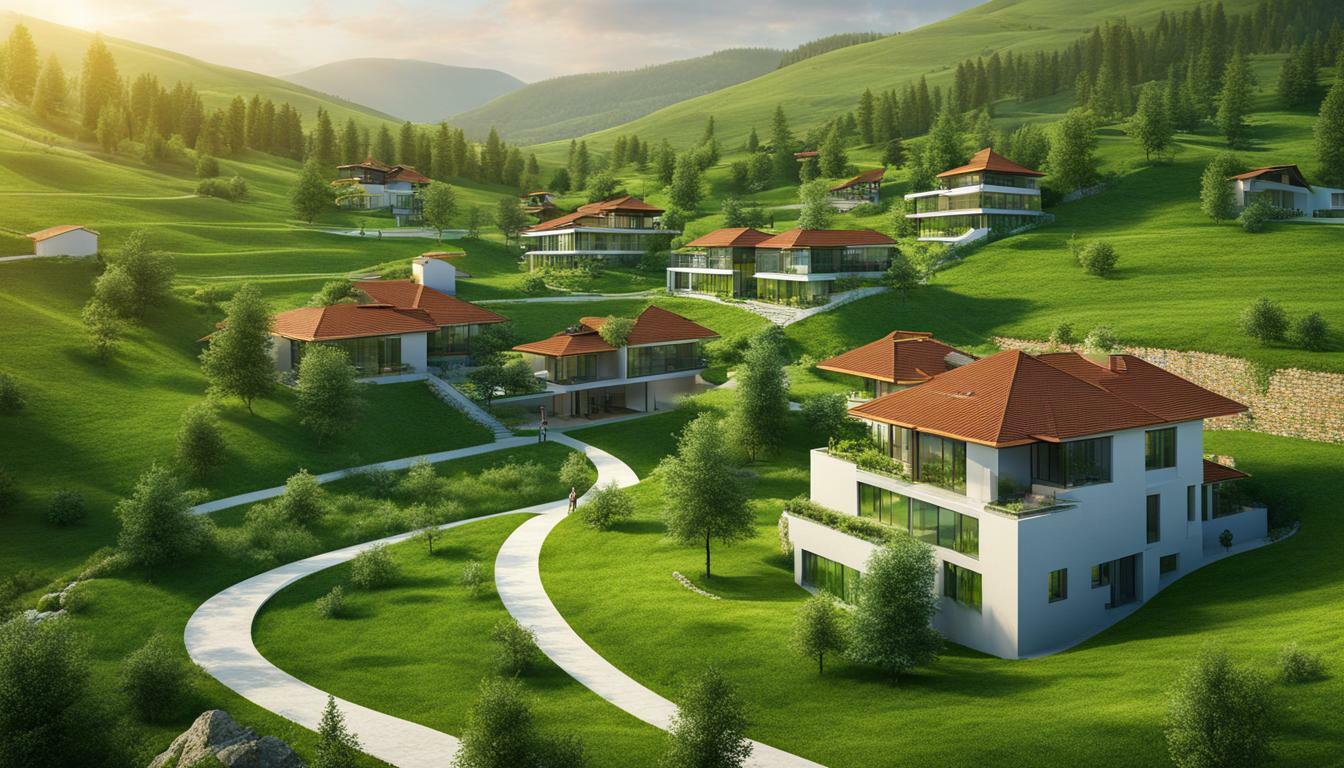Exploring the History of Green Building in Belize
Belize, a small country located on the eastern coast of Central America, has been making significant strides in green building over the years. With a rich history and diverse natural resources, Belize has recognized the importance of sustainable construction methods and practices.
Green building practices in Belize have a fascinating history that dates back centuries. The country’s commitment to sustainable development and environmental conservation has helped shape the way buildings are designed and constructed in the region.
Key Takeaways
- Belize has a rich history of sustainable building practices that date back centuries.
- The Green Building Institute in Belize plays a crucial role in promoting sustainable construction techniques and certifying green buildings.
- The government of Belize has been actively promoting green building through policies, regulations, and financial incentives for developers and homeowners.
- The tourism industry in Belize is embracing sustainable construction practices and eco-friendly operations to attract environmentally conscious travelers.
Mayan Architecture: Early Examples of Sustainable Building
One of the earliest examples of sustainable building in Belize can be found in the traditional Mayan architecture. The Mayans developed a range of sustainable building techniques that incorporated their deep respect for the environment and their understanding of the local climate and resources.
A key aspect of Mayan architecture was the use of sustainable materials, such as locally sourced limestone, which allowed them to construct buildings that were not only durable but also eco-friendly. They also incorporated natural elements into their designs, such as caves, cenotes, and waterways, which provided practical benefits such as natural sources of water and drainage for irrigation.
In addition to their use of sustainable materials and natural elements, the Mayans were pioneers in hydrological engineering. They developed a system of canals, reservoirs, and aqueducts to manage water resources and harness the power of water for irrigation. Their innovative engineering techniques demonstrate their understanding of the importance of sustainable practices in building and sustaining their communities.
The Mayans also showed a deep understanding of environmental conditions, an example being their use of natural ventilation and shade to reduce the need for artificial cooling systems. They also implemented clever architectural techniques such as sloping walls to strengthen the structures against earthquakes, a common occurrence in the region.
Overall, the traditional Mayan architecture provides valuable lessons for modern sustainable building practices. By using locally sourced materials, incorporating natural elements, and implementing innovative engineering techniques, the Mayans created impressive structures that minimize environmental impact. They serve as one of the earliest examples of sustainable building practices and a testament to the importance of environmental consciousness in architecture.

Colonial Era: Blending Sustainability with British Influence
Fast forward to the colonial era, when Belize was under British rule. The British played a significant role in shaping the sustainability practices in the colonies they established.
One of the notable ways British influence and sustainability merged was in agriculture. The British introduced new farming techniques and crops to the colonies, aiming to improve productivity and create sustainable food systems. They promoted practices such as crop rotation and the use of manure, recognizing their long-term benefits for soil fertility and conservation. These sustainable agricultural practices contributed to the growth and prosperity of the colonies, enabling them to meet their food demands while minimizing environmental degradation.
Another area where British influence and sustainability intertwined was in infrastructure development. The British implemented innovative projects, including the construction of roads, bridges, and ports, to facilitate trade and transportation within the colonies. They utilized locally sourced materials and design elements that aligned with the natural landscape, minimizing environmental impact and promoting long-term sustainability.
Resource management was also greatly impacted by British sustainability practices. The British introduced policies and regulations that aimed to conserve natural resources and protect the environment. This included measures such as timber regulations, hunting restrictions, and conservation initiatives that aimed to preserve the natural beauty and biodiversity of the colonies.
The adoption of sustainable agricultural techniques, the implementation of eco-friendly infrastructure, and the management of natural resources showcased the British commitment to creating sustainable and resilient colonies. This blending of sustainability principles with British influence has left a lasting impact on the colonial era and served as a foundation for subsequent sustainability efforts in the regions influenced by British colonization.

Modern Green Building Movement in Belize
The modern green building movement gained traction in Belize during the late 20th century, with the establishment of the Green Building Council of Belize. This council promotes sustainable construction practices and provides certification for green buildings in the country.
Energy-efficient buildings are a cornerstone of the modern green building movement in Belize. The country has a warm tropical climate, and buildings are designed to maximize natural ventilation and minimize the need for air conditioning. This reduces energy consumption and associated greenhouse gas emissions, leading to a more sustainable built environment.

Another important aspect of the modern green building movement in Belize is the use of renewable energy. Many buildings are equipped with solar panels to harness the abundant sunshine and generate electricity. This reduces the reliance on fossil fuels and decreases carbon emissions, contributing to a greener environment.
Water conservation is also a key component of green buildings in Belize. These buildings often incorporate rainwater harvesting systems, which collect and store rainwater for reuse. Additionally, efficient plumbing fixtures are used to reduce water consumption and preserve the country’s limited freshwater resources.
The modern green building movement in Belize also prioritizes the use of locally sourced and sustainable materials. This reduces the carbon footprint associated with transporting materials from distant locations and supports the growth of the local economy.
Public awareness and education campaigns are crucial in promoting the modern green building movement in Belize. Organizations and government agencies work together to provide training and resources on sustainable building practices to architects, builders, and homeowners. This helps to increase the adoption of green building practices and promote a more sustainable built environment.
Financial Incentives and Future Outlook
The government of Belize has also taken steps to promote green building through financial incentives. These incentives aim to encourage sustainable housing developments and green infrastructure projects, promoting sustainable urban development across the country.
Financial incentives provide businesses and individuals with the motivation and rewards necessary to achieve sustainable building practices. In Belize, the government offers tax breaks and subsidies for eco-friendly building techniques and materials, making it easier and more affordable to construct energy-efficient buildings.
These financial incentives have contributed to the increasing construction of sustainable housing developments across Belize. These developments incorporate energy-efficient design, renewable energy sources, and sustainable materials to reduce their environmental impact and promote sustainable living.
In addition to sustainable housing developments, Belize has also seen an increase in green infrastructure projects. These projects involve using sustainable building practices to create green spaces, such as parks, gardens, and public spaces. They also include the conservation of natural ecosystems and the promotion of sustainable land use practices.
The future outlook for green building in Belize looks promising, with the government and organizations continuing to promote sustainable construction practices through financial incentives. As more businesses and individuals adopt these practices, the country will become more environmentally friendly and sustainable. This, in turn, will lead to a better quality of life for all Belizeans and a healthier planet as a whole.

Financial incentives play a crucial role in shaping the future outlook of businesses and individuals. These incentives provide motivation and rewards for achieving certain goals or targets, promoting performance and productivity. However, it is important to strike the right balance and align financial incentives with long-term goals to ensure sustainable and ethical business practices.
Conclusion
As we reflect on the history of green building in Belize, it is evident that the country has made significant progress in promoting sustainable development and environmental stewardship. From the traditional Mayan architecture to the modern green building movement, Belize has a rich history of sustainable construction practices.
The government of Belize has taken proactive steps in promoting sustainability, establishing the Green Building Council of Belize and offering financial incentives for sustainable building projects. This has resulted in an increasing number of sustainable housing developments and green infrastructure projects across the country.
However, there is still much room for improvement. As the global community continues to grapple with the effects of climate change, it is essential for Belize to continue prioritizing sustainable construction practices and investing in green infrastructure projects. By doing so, Belize can further promote environmental stewardship and contribute to a more sustainable future for all.
FAQ
Q: What is the history of green building in Belize?
A: The history of green building in Belize dates back centuries, with traditional Mayan architecture showcasing sustainable building techniques. British colonial influence also incorporated sustainability principles. In the late 20th century, Belize embraced the modern green building movement, implementing policies and establishing organizations like the Green Building Council of Belize.
Q: What sustainable building practices were used in ancient Mayan architecture?
A: The ancient Mayans utilized local materials like limestone, wood, and thatch to construct energy-efficient buildings. These materials had excellent thermal properties and promoted natural ventilation, harmonizing with the natural surroundings while providing comfortable living conditions.
Q: How did colonial-era buildings incorporate sustainability in Belize?
A: Colonial-style buildings in Belize were designed with high ceilings, large windows, and spacious verandas to maximize natural light and airflow. These features reduced the need for artificial lighting and air conditioning, reducing energy consumption and promoting sustainability.
Q: What is the Green Building Council of Belize?
A: The Green Building Council of Belize is a non-profit organization established in 2007. It promotes sustainable building practices, offers green building certifications, and advocates for the implementation of green building standards nationwide.
Q: What are some financial incentives for green building in Belize?
A: The government of Belize provides low-interest loans through the Development Finance Corporation to individuals and businesses engaged in green building projects. These incentives have encouraged the adoption of sustainable construction practices across the country.
Q: What is the future outlook for green building in Belize?
A: Green building in Belize is expected to continue thriving, with an increasing number of eco-resorts, sustainable housing developments, and green infrastructure projects. This promotes the preservation of natural resources, job creation, and economic growth in the country.








